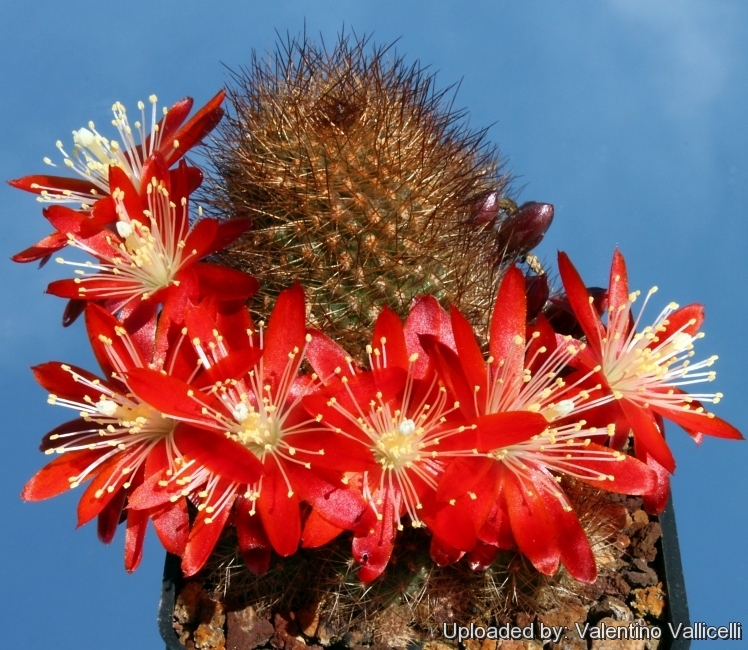
Rebutia fulviseta Photo by: Valentino Vallicelli
WR319 (Collector: Walter Rausch) Padcaya, Tarija, Bolivia. Altitude: 2200m. This is a great favourite among the small clustering rebutias. It has a dark reddish body with dense soft tawny-red spines.The flowers are diurnal, dark red with thin petals (spidery) and many showy white stamens.
Origin and Habitat: Bolivia (Tarija, Arque, near Padcaya) and Argentina (Salta, Santa Victoria to Caspala, to Santa Ana, to the east from Humahuaca).
Altitude range: Around 2200 metres above sea level.
Synonyms:
Description: Rebutia fulvisetaSN|4953]]SN|5202]] is a dark green bodied, mat forming cactus of rather small subcylindric heads, the epidermis, especially on the tubercles, becomes bronzed purple in full sunlight. Probably a very decorative variety of Rebutia deminutaSN|5202]]SN|4953]]. Its has characterized by brown-felted areoles, bears bristly brown spines and has small dark red flowers with white filaments. Maximum dimensions 6 cm tall, 10 cm wide ( in cultivation).
Stem: Globular or vaguely elongated, 1 cm in diameter, 1,5 cm tall. The epidermis is very dark tan, green, or brown, almost black, with the a reddish-violet nuance.
Ribs: Up to 16 tuberculate and spiralling.
Areoles: Round or oval, with a brown indumentum.
Spines: 10-12 radials and 1-3 centrals, about 6-10 mm long, Thin, divergent, tawny or reddish-brown with darker tips, that give to the plant its characteristic bristled-up form.
Flowers: Funnel-shaped, thin-petaled (spidery), dark red, ca. 2,5 cm in diameter and length, arising from the base of the stem, with a long stretched out pistil and showy white stamens. Pericarp darker violet-red and tube with the scales bearing white woolly hairs and bristles.
Blooming time: Diurnal in spring.
Fruit: Spherical, dark red, up to 4 mm.
Bibliography: Major references and further lectures
1) Edward Anderson “The Cactus family” Timber Press, Incorporated, 2001
2) James Cullen, Sabina G. Knees, H. Suzanne Cubey “The European Garden Flora Flowering Plants: A Manual for the Identification of Plants Cultivated in Europe, Both Out-of-Doors and Under Glass”} Cambridge University Press, 11/Aug/2011
3) David R Hunt; Nigel P Taylor; Graham Charles; International Cactaceae Systematics Group. “The New Cactus Lexicon” dh books, 2006
4) Donald, John Donald “The Classification of the Rebutias” Ashingtonia, vol. 2 1975
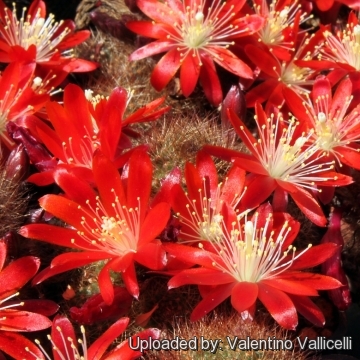 Rebutia fulviseta Photo by: Valentino Vallicelli
Rebutia fulviseta Photo by: Valentino Vallicelli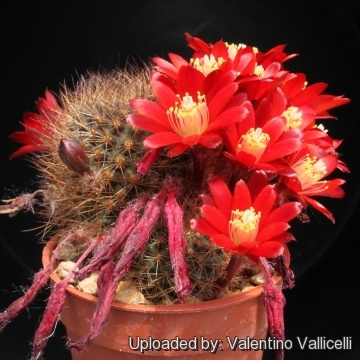 Rebutia fulviseta Photo by: Valentino Vallicelli
Rebutia fulviseta Photo by: Valentino Vallicelli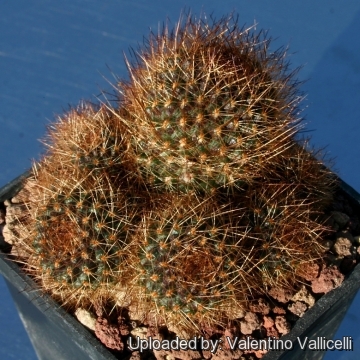 Rebutia fulviseta Photo by: Valentino Vallicelli
Rebutia fulviseta Photo by: Valentino Vallicelli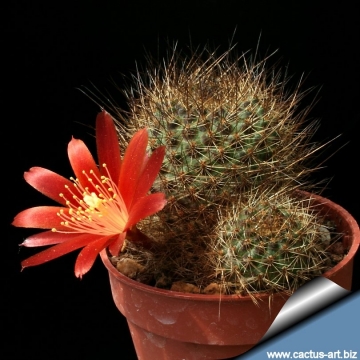 Rebutia fulviseta Photo by: Cactus Art
Rebutia fulviseta Photo by: Cactus Art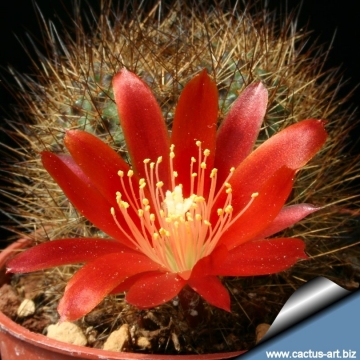 Rebutia fulviseta Photo by: Cactus Art
Rebutia fulviseta Photo by: Cactus Art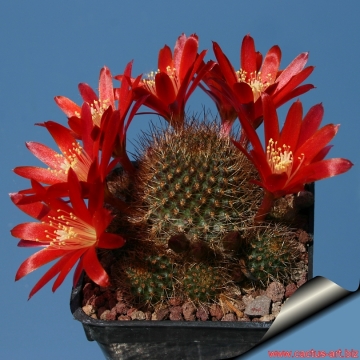 Rebutia fulviseta Photo by: Cactus Art
Rebutia fulviseta Photo by: Cactus ArtCultivation and Propagation: Needs a very bright exposure but not direct sun. Water regularly in summer but do not over-water. Keep dry in winter. Hardy to -4°C.
It is better that they be repotted regularly. Repotting will increase the number and size of stems, and will increase the number of flowers produced. Repot yearly until reaching about 40-50mm in size, then every two or three years will suffice. Repotting is best done at the end of winter, but it can be done at other times, too. Do not water for a couple of weeks after repotting, to reduce risk of root rot via broken roots.
Propagation: Offsets, seeds
















